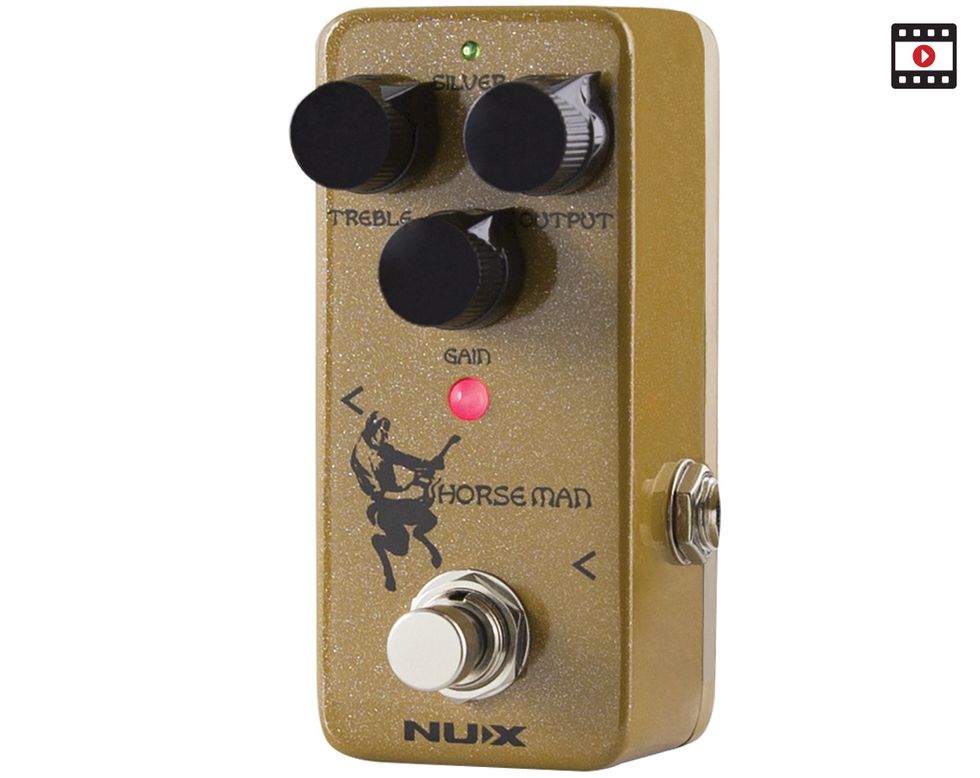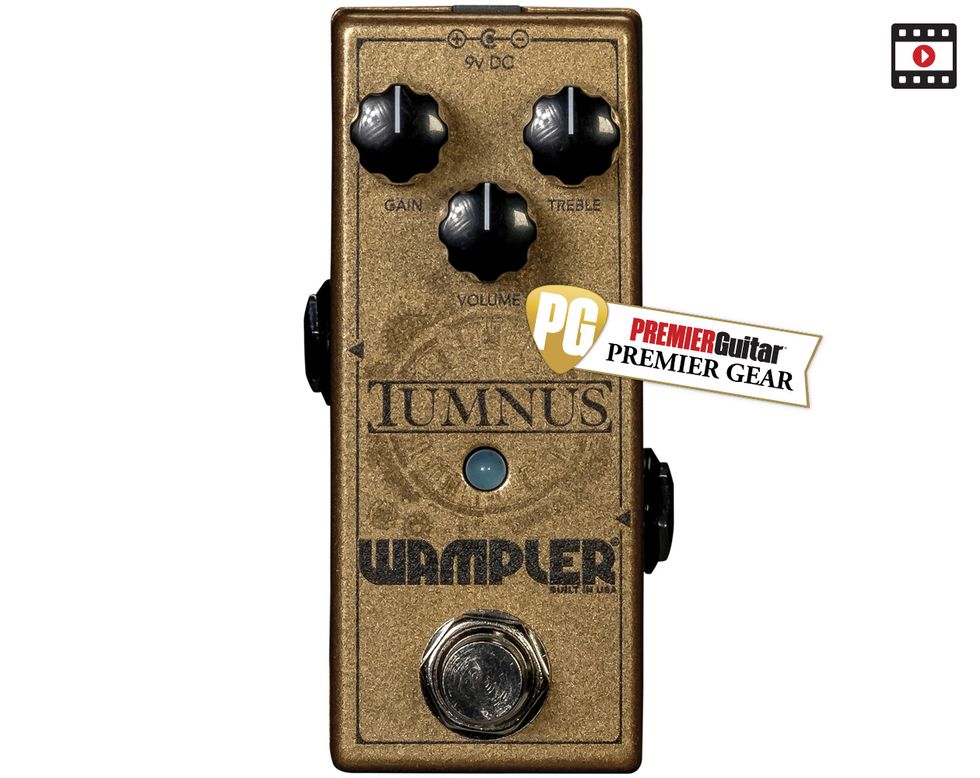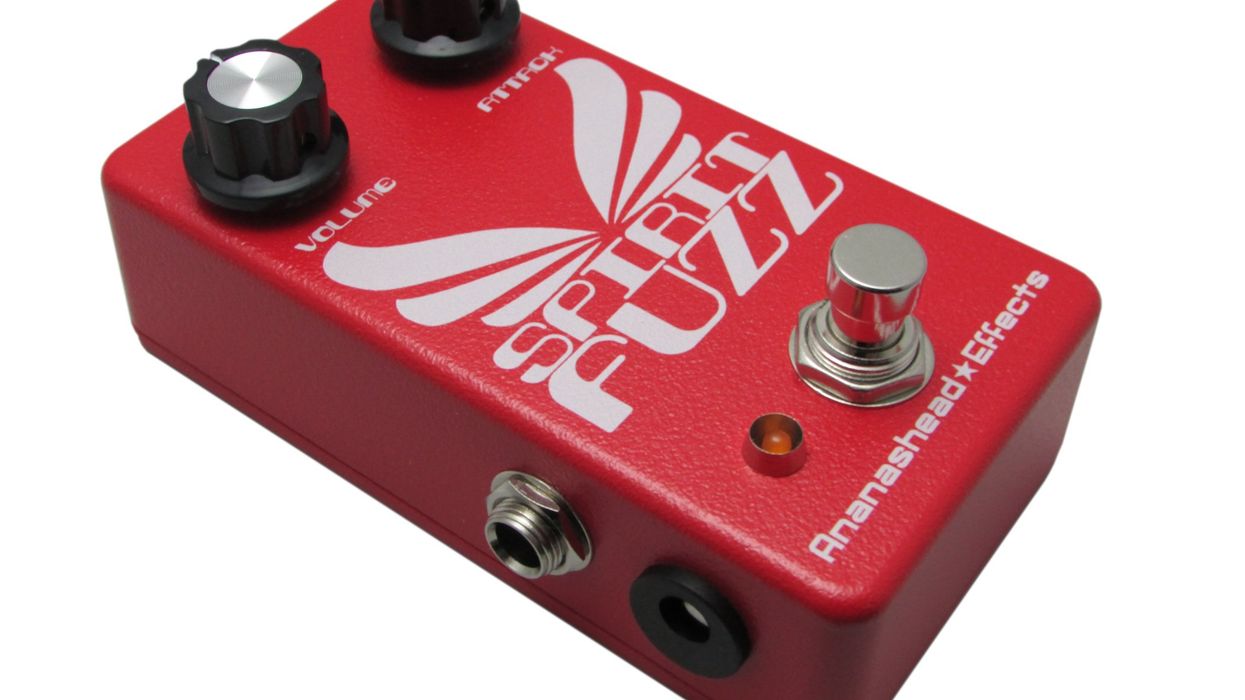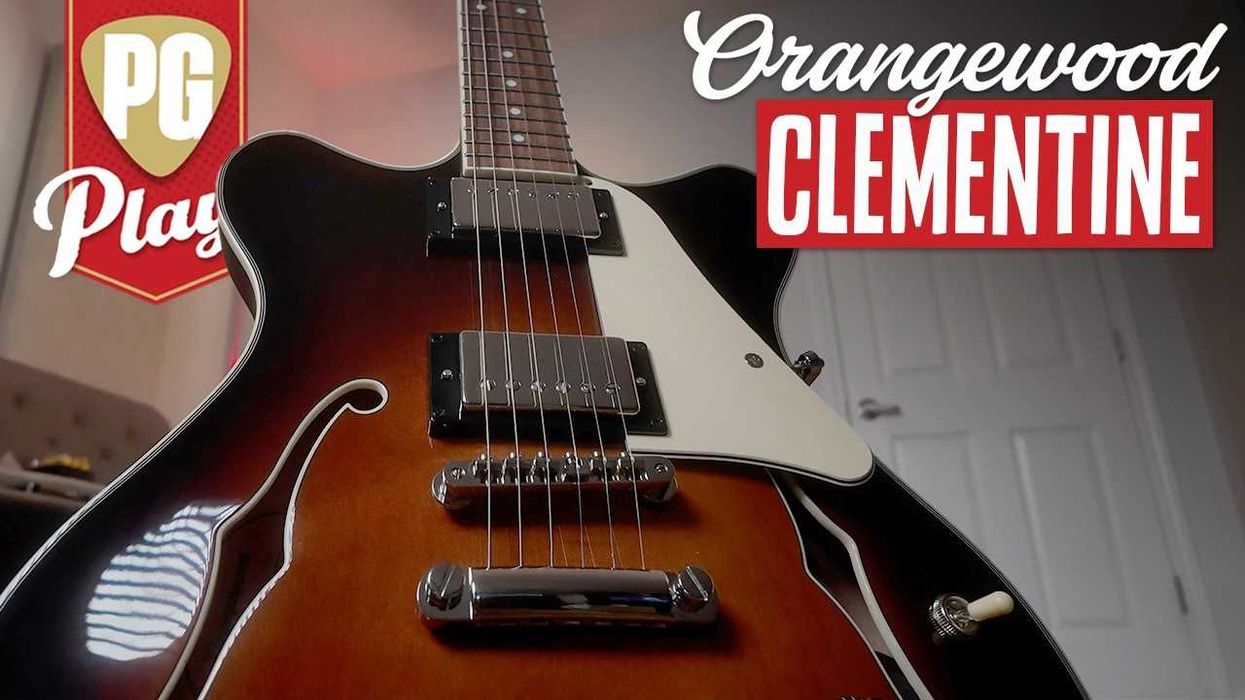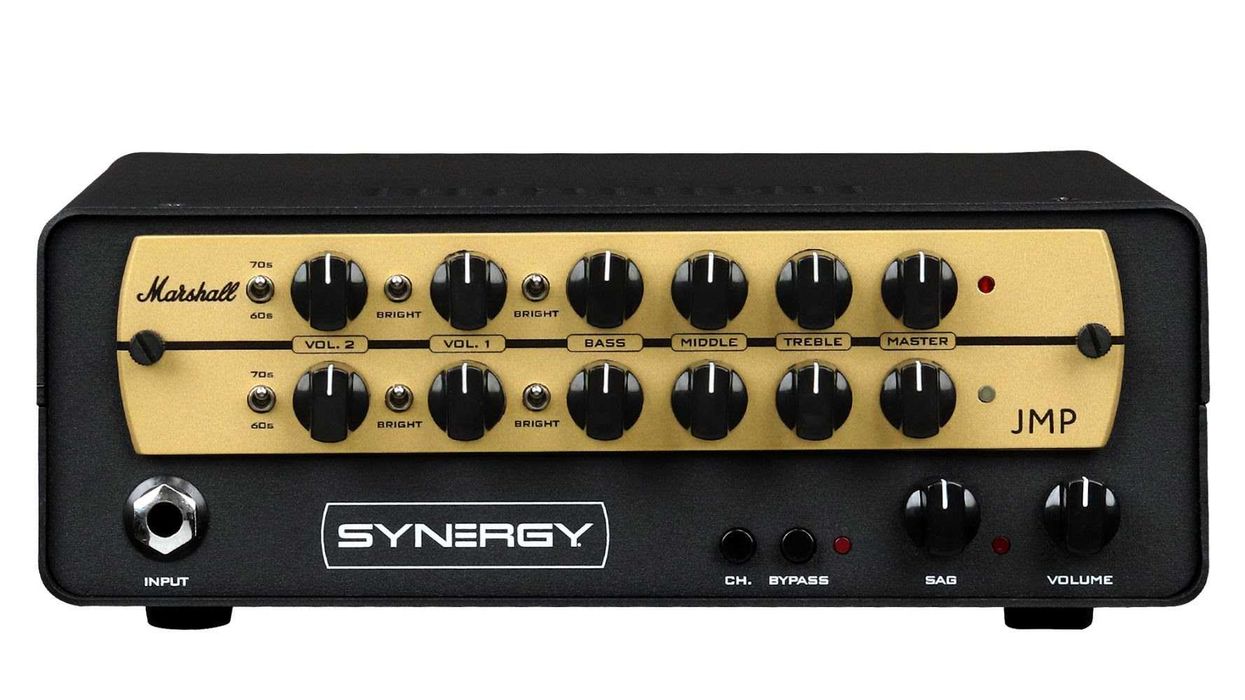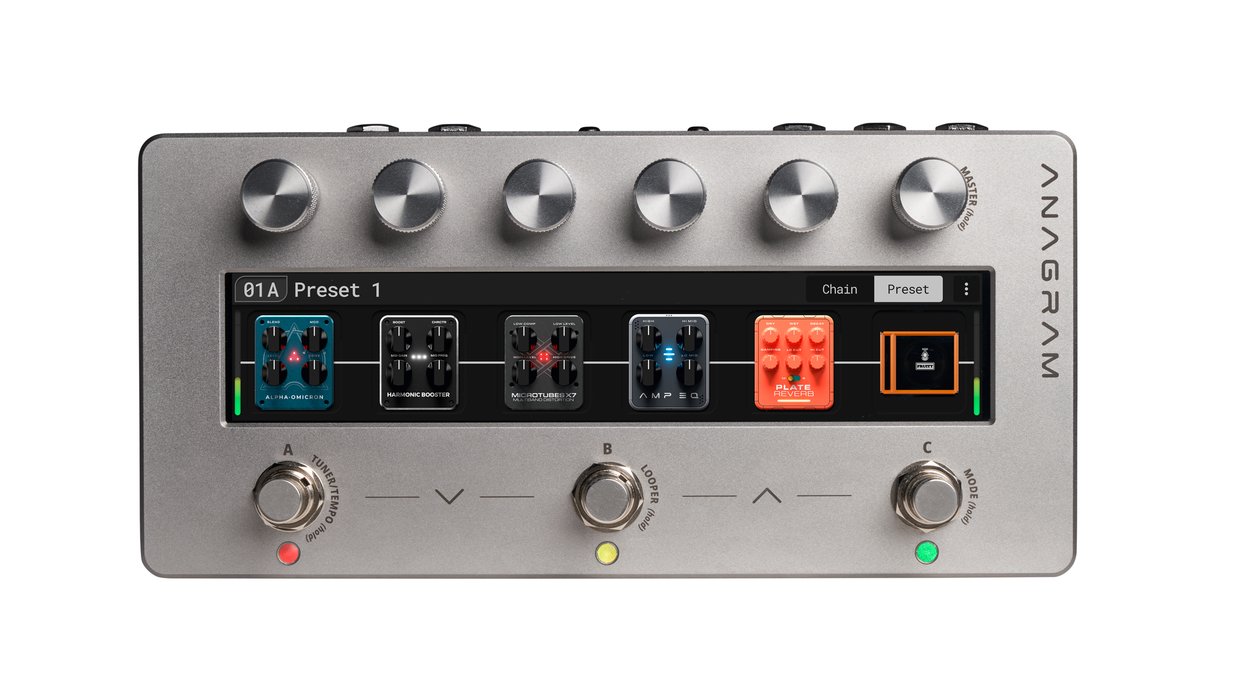It's been more than a quarter century since the Klon Centaur overdrive debuted. So why are we still talking about it?
The Klon became a cult item soon after it appeared, celebrated for its transparent overdrive. “Transparent" isn't exactly a scientific term, but it makes sense when comparing the Klon to the popular overdrives that preceded it—notably the Ibanez Tube Screamer, which to this day provides the template for a large percentage of overdrive pedals.
A Screamer trims highs and adds a prominent midrange bump at around 750 Hz. A Klon's core sound is less highly colored, with clearer highs and greater clean headroom. A Screamer's compression smoothes out note attack, while a Klon delivers faster, crisper transients. Screamer tone never cleans up completely, even with the gain knob at minimum. But a Klon with its gain knob fully counter-clockwise delivers a pure clean boost. (Though it might not sound clean, depending on how hard the Klon's output is slamming your amp's input.) To many ears, the Klon was a sonic upgrade over previous overdrive pedals. When the guitar magazine I worked for in the '90s covered the initial version, I bought the review model. I used that pedal (serial number 309) for reference while exploring our five klones.
Secrets of the Klon Kult
How does the Klon work its magic? Like most overdrives released since the 1970s, it owes its tones to an overdriven op amp, with extra color and compression from a pair of clipping diodes. Klon fanciers tend to focus on those two parts: the TL072, a low-noise, JFET-based op amp, and two NOS germanium 1N34A diodes.
Generally, germanium diode distortion is slightly softer and "spongier" relative to brighter, crisper-sounding silicon diodes and LEDs. But you only hear the diode's character at the circuit's highest gain settings—most of the distortion comes from the op amp. Meanwhile, the TL072 is a common and inexpensive part. But even if it weren't, any number of op amps would yield similar results.
My tests suggest that the Klon's character comes from its ingenious circuit topology, and not from "magic" parts. There's a charge pump that generates 18 volts from a standard 9-volt power supply, and you hear the difference—tones are sparklier and more dynamic, with more clean headroom. The gain architecture is even more innovative. Incoming audio is split into three paths, one of which passes through the distorting op amp and diodes. Another path sends undistorted lows to the output, anchoring the bottom end. Meanwhile, the third path is a relatively hi-fi clean boost. The pedal's gain knob simultaneously controls the levels of both the distorted and clean boost paths. Turning the pedal's gain knob clockwise emphasizes the distortion while lowering the clean signal, and vice versa.
Other factors include an especially nice-sounding input buffer that prevents guitar pickups from loading down the circuit, a handsomely voiced treble-cut tone control, and memorable cosmetics. Original Klons have expensive, custom-cast enclosures with that striking bronze-and-oxblood color scheme. And, of course, there's the sword-wielding centaur icon, usually referred to as "the horsie." (Horsie Klons have the highest resale value.)
Klon vs. Klone
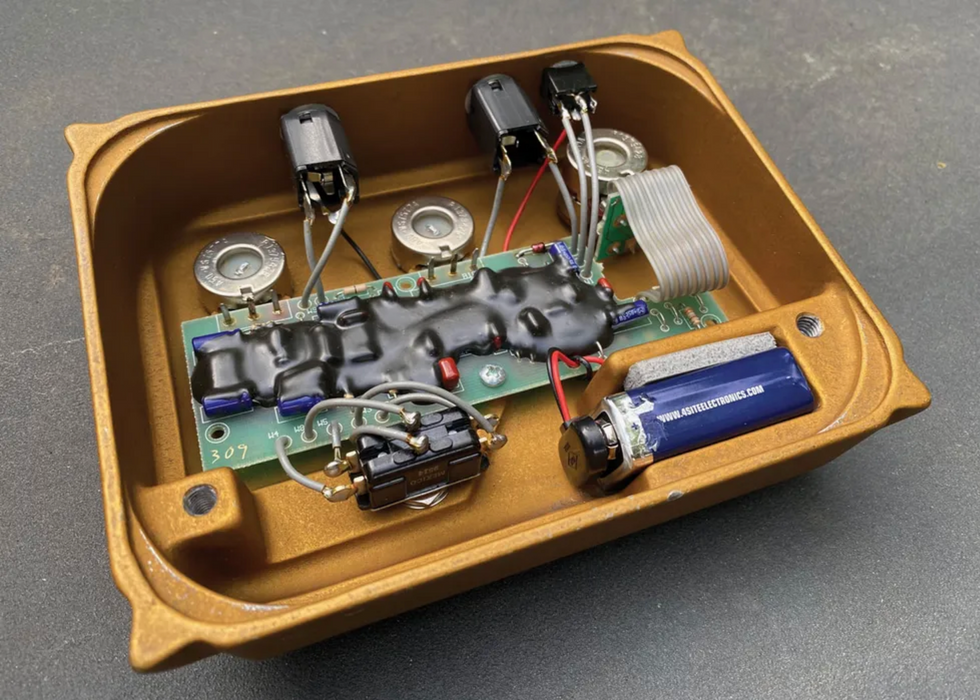
Image 1 — Original Klons obscured their circuitry with black epoxy. That trick never works! The Klon schematic is readily available online.
Original Klons tried to maintain circuit secrecy with a coat of black epoxy (see Image 1).
It didn't work. The schematic is widely available. Copyright law doesn't protect circuits, so the schematic is free for the cloning. On the other hand, copyright law says you can't mimic a product's "trade dress"—the visual appearance that identifies it to consumers. But that hasn't prevented klones from paying "tribute" to the original's gold/bronze enclosure, dark red knobs, and centaur sketch.
The original Klon employed traditional through-hole parts. Our contender klones have modern surface-mount components, which facilitate automated production and keep list prices low. Two of them employ NOS through-hole germanium diodes, while the other three substitute modern silicon ones. All are scaled-down relative to the original, with enclosure sizes ranging from a standard B-sized box down to tiny AAs. There's also a dramatic price spread: from $69 to $199. All pedals run on standard 9V power supplies.
Testing Procedures
To keep things as objective as possible, I recorded the demo clips straight into my DAW with no processing, and then re-amped them through each of the klones. That way, you hear the identical performance through each pedal. Aside from switching klones, nothing in the signal chain changes. For the audio-only clips (see the page at the end of this article) I used a Fender Telecaster Deluxe with Lollar Regal wide-range humbuckers, a clean-toned Carr Telstar amp, and a Royer R-121 ribbon mic, recorded into Logic Pro via a Universal Audio Apollo interface. For the video I used a "parts" S-style guitar with Lollar Firebird pickups and Fender-style Carr Skylark.
In the audio-only clips you'll hear four audio comparisons arranged into four playlists. First, there's a 1:23-long passage with all pedal knobs set to noon. Next comes a gain test: You hear each pedal, first with the gain control at minimum (that is, in full clean-boost mode) and then at maximum. The third comparison displays the full range of the tone controls, first at minimum, then at maximum, and then back to the noon position. The final test compares the output controls. First, you hear the passage with a low output setting, with the knob around nine o'clock, and then at maximum. The low output setting is too quiet to overdrive the amp, isolating the distortion color produced by the pedal, as opposed to how that sound interacts with an overdriven amp.
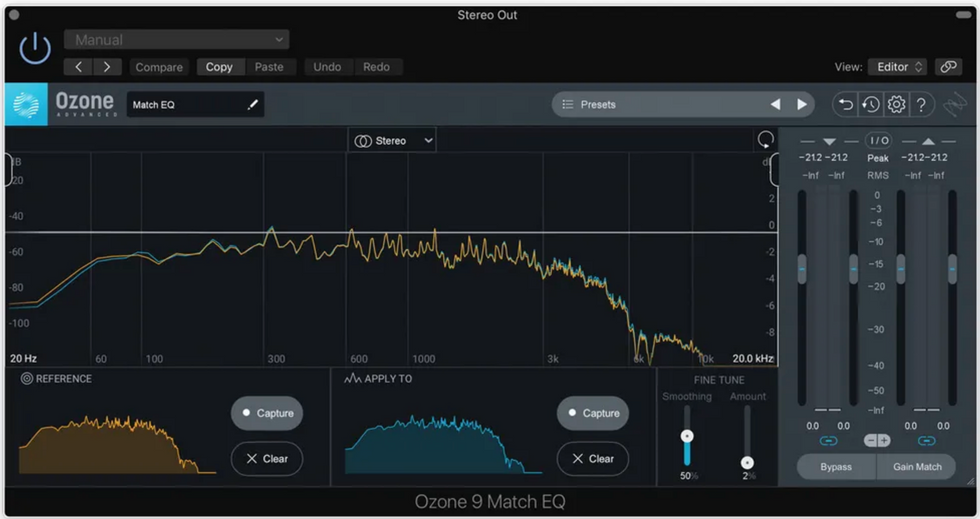
Image 2 — A spectral comparison of a passage played through the original Klon and through the EHX Soul Food reveals that their EQ curves are nearly identical. Other comparisons yielded similar results.
In each case, you hear the original Klon first, followed by the five modern pedals in alphabetical order, from Electro-Harmonix Soul Food through Way Huge Conspiracy Theory.
Spoiler alert: These pedals sounds remarkably similar, and that's not just a subjective impression. Consider Image 2, which compares the spectrum (EQ curve) of a passage recorded through the original Klon and through the EHX Soul Food.
The orange portion depicts the Klon, the blue portion the EHX. Their EQ profiles are superimposed in the main window. The orange and blue lines track so closely that it's sometimes hard to discern two separate measurements. Comparisons between the Klon and the other contenders yield similar results. In other words, prepare to listen for very subtle distinctions.
Diodes to Die For?
Finally, a word about those germanium diodes: Judging by the online forums, this is the crucial feature separating the Klon from the klones. Even Klon founder Bill Finnegan cites particular germanium diodes (from his stash of NOS 1N34As) as the most important ingredient in the Klon casserole.
I think the audio suggests the opposite.
Klon vs. Klones by premierguitar
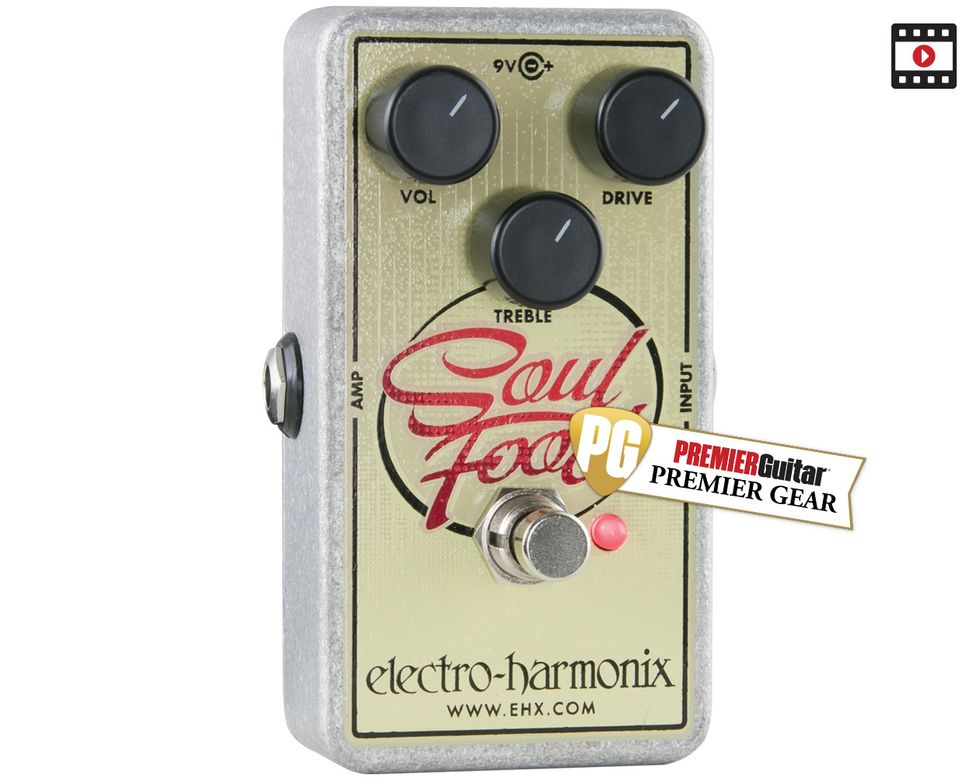
RatingsPros:Great price. Excellent overdrive sounds. Adapter included. Cons: Keen ears might miss low-end weight. Street: $86 Electro-Harmonix Soul Food ehx.com | Tones: Ease of Use: Build/Design: Value: |
Electro-Harmonix Soul Food
Priced at a modest $86, EHX's Soul Food is the second-least-expensive pedal among the five competitors. It lives in a standard B-sized enclosure large enough for a battery compartment. You can also use standard 9V power supplies. (Soul Food is the only pedal in this roundup that comes with an AC adapter.)
The Soul Food circuit board employs mostly small, surface-mount components, with the exception of several capacitors and the clipping diodes. The latter are silicon in lieu of the Klon's germanium. Still, as Image 2 above shows, the Soul Food's tone profile matches that of the original Klon almost exactly. At heavy settings, I think I hear slightly more compression and gain from the Soul Food, but I'm not always certain. We're quite close to Klon here.
Hear for yourself: As mentioned, most of the Klon's overdrive comes from the TL072 op amp. The clipping diodes are only a factor at high-gain settings. For the clearest comparison of diode color, listen to the second halves of the clips in the Gain Control playlist, where the gain knobs are at maximum. Even here, the two tones are quite similar. The Soul Food is a little brighter at the very top end, and the Klon has a wee bit more weight under 100 Hz. But these differences are far from dramatic.
Soul Food has a secret trick: a small internal switch to select between true bypass mode (the default) and buffer bypass mode. Again, the differences are extremely subtle, unless you're connecting a retro-style fuzz downstream from Soul Food. (A germanium Fuzz Face, for example, is likely to sound too thin and bright when placed after a buffered effect.)
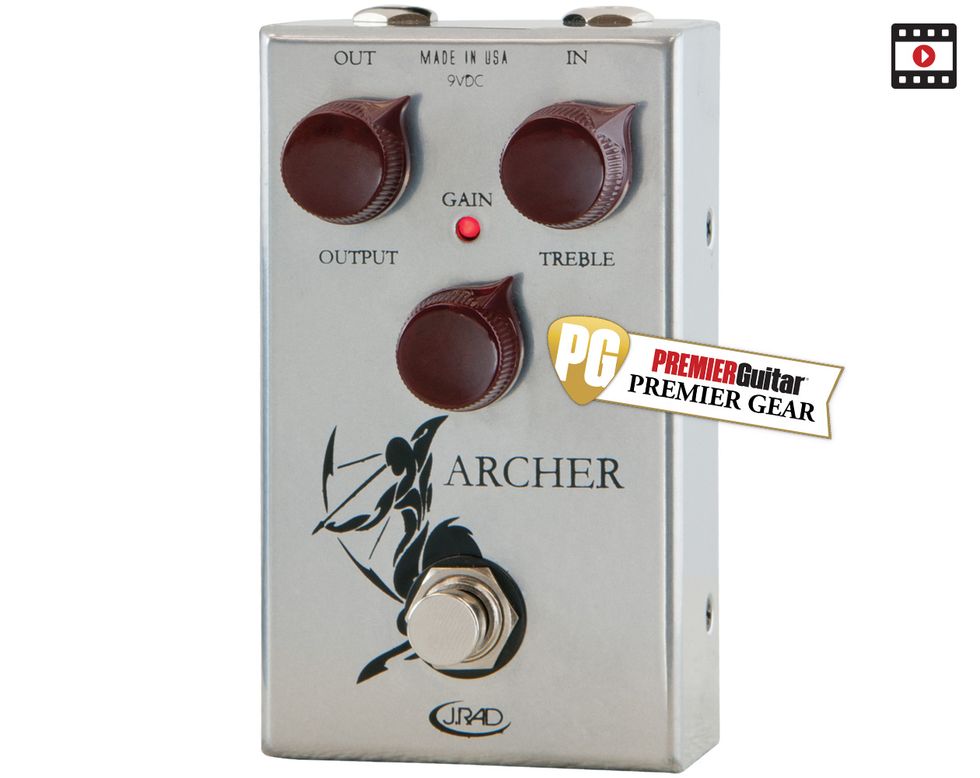
RatingsPros:Exceedingly accurate Klon sound. Germanium diodes. Extraordinary build quality. Cons: Relatively costly. Street: $199 J. Rockett Archer rockettpedals.com | Tones: Ease of Use: Build/Design: Value: |
J. Rockett Archer
The Archer, a klone from J. Rockett, stands out from the herd even before you plug it in. While all the pedals covered here sound convincingly Klon-like, the Archer clearly aspires to the original's build quality, too. Measuring 4" x 2.25" x 1.25", it is slightly smaller than a standard B-sized box. The top-mounted jacks will suit overpopulated pedalboards, but there's still enough room for a 9V battery. The enclosure isn't quite as deluxe as the original Klon's sculptural, custom-cast shell, but it has a similar heft. The Archer is this roundup's most reassuringly solid stompbox. And at $199, it's the most expensive.
The Archer's circuit board features a roughly 50/50 mix of through-hole and surface-mount parts. The op amp is a TL072, while the clipping diodes are NOS germanium. Clearly, the Archer aspires to be as Klon-like as possible, as if that weren't already clear from the round oxblood knobs and a weapon-wielding mascot with hooved hindquarters. Mission accomplished! While all five of these pedals get close to the Klon sound, Archer is one of the nearest dead-ringers. I wouldn't be able to differentiate the Klon and the Archer in a blind listening test.
RatingsPros:Absurdly low price. Dual buffer and gain modes. Good tones. Cons: Klon-like, but not quite as Klonic as some options. Inexpensively made. No battery compartment. Street: $69 NUX Effects Horseman nuxefx.com | Tones: Ease of Use: Build/Design: Value: |
NUX Horseman
Original “horsie" Klons currently fetch $3,000 on Ebay. For that price, you can buy 43 1/2 NUX Horseman pedals. Yup—this klone sells for a mere $69. It's the only contestant to be built in China. (All the others are made in the U.S.)
The Horseman's stable is a tiny AA-sized enclosure, which means there's no battery compartment. That makes it about 1/6 the size of the original Klon. It's a bit surreal to see that legendary circuit crammed into a device requiring only a sliver of pedalboard space. Unsurprisingly, given its low cost, the parts and build quality don't quite match those of the pricier options. But you can't argue with the Horseman's excellent tones.
The electronics layout is interesting, with two circuit boards facing in toward each other. Silicon Schottky diodes replace the original's germanium parts. Compared to the Klon, the Horseman's tones are marginally less sparkly and a bit boomier below 200 Hz. Transients are slightly less crisp. But even if this pedal's sound is the easiest to differentiate from the vintage Klon, it's still awfully close. I'd have no qualms gigging with this bargain-priced burner.
The Horseman can do a few extra stunts. Like the EHX Soul Food, it offers a choice of true or buffered bypass, depending on whether you hold the bypass switch down during startup. Again, the sonic differences are usually negligible, though the setting can affect the tones of retro-style fuzzes placed after the Horseman in the signal chain. You can also press the footswitch for a few seconds to select between “gold" and “silver" modes. According to NUX, gold mimics the gain character of the original bronze Klon, while silver evokes later silver-colored models, which are a bit gainier. Yes, high-gain silver mode settings are slightly more distorted than the same settings in gold mode, though the distinctions remain subtle. A small secondary LED indicates the status.
RatingsPros:Highly accurate Klon tones. Excellent build. Ultra-compact. Cons: No battery compartment. Street: $149 Wampler Tumnus wamplerpedals.com | Tones: Ease of Use: Build/Design: Value: |
Wampler Tumnus
Brian Wampler's pint-sized klone replaces the horsie with a goatie. The pedal is named for Mr. Tumnus, the friendly faun from C.S. Lewis's Narnia books. It occupies a tiny AA box like the NUX Horseman, but it's even a bit smaller. (Obviously, there's no battery compartment.) Tumnus's build quality is superior, as you'd expect for a pedal costing twice as much. It's also attractive, with its enclosure painted a deep gold color and bedecked with subtle figuration.
Tumnus nails the original Klon tone with great accuracy. This is interesting, given that it employs surface-mount silicon diodes in lieu of germanium. Clearly, you could argue that it's a further refutation of claims that rare diodes are essential for Klon-like tones. Again, I refer you to the second part of the relevant clips in the Gain Control playlist, where diode color is most evident. Even here, the two sounds are almost indistinguishable.
Wampler also loaned us their newer Tumnus Deluxe pedal. We don't have space for a standalone review, but we can summarize what it brings to the party: The control layout on the relatively large 125B-sized enclosure retains the usual treble-cut tone control (which functions just as it does on the original) but adds active bass and midrange controls. There's also a buffer bypass switch and a “hot" switch that boosts gain.
The Deluxe model can sound as Klon-like as the mini version, but it can also veer in different directions. The bass control can add thudding lows and low mids that you won't get from a straight klone. The midrange control also unlocks many new sounds. At extreme settings, this filter gets nasal and resonant, almost like a notched wah pedal. There's a demo clip in the Extras playlist called 1. Tumnus Deluxe (various settings), where I work the tone controls while the demo riff plays. On a Klon, it's hard to dial in a bad sound. The Tumnus Deluxe makes it easier—underscoring the balance and smart design behind the original control set. Of course, those “bad" sounds may be perfect in context and represent interesting possibilities. Notice how thrashy everything gets when I flick on the high gain switch at around 1:08. At $199, Tumnus Deluxe is perfect for a player who wants great straightforward Klon overdrive and many usable variants.
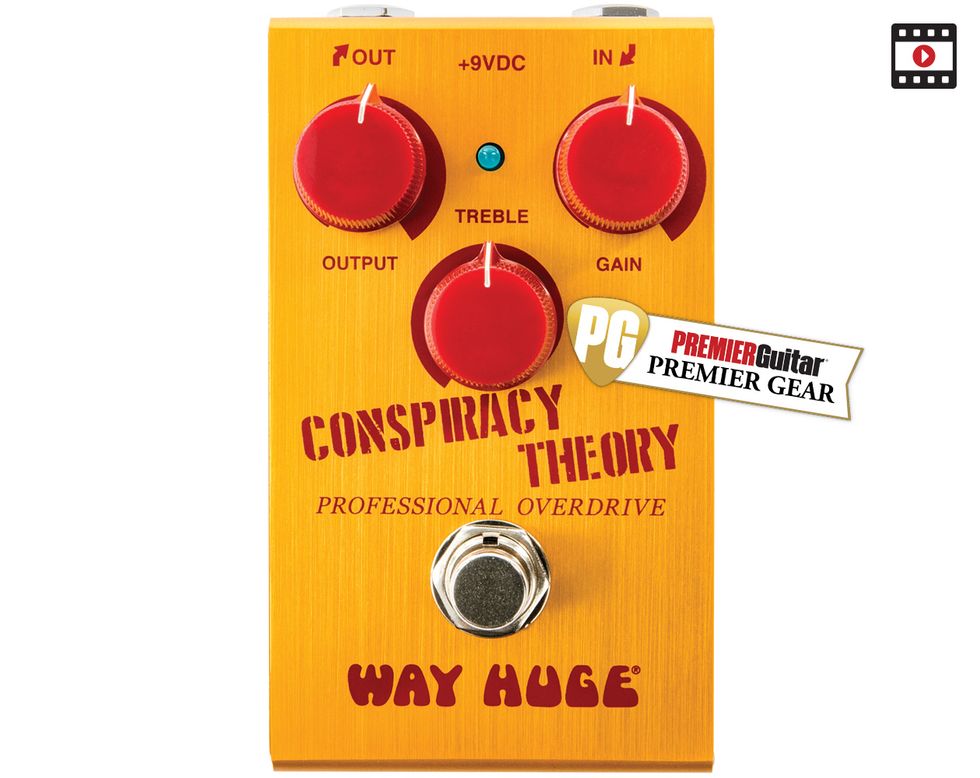
RatingsPros:Excellent overdrive sounds. Quality build. Germanium diodes. Cons: Ever-so-slight bump in low-mids might distract some original Klon purists. Street: $129 Way Huge Conspiracy Theory jimdunlop.com | Tones: Ease of Use: Build/Design: Value: |
Way Huge Conspiracy Theory
Way Huge's Conspiracy Theory is yet another fine-sounding Klon klone. It uses modern surface-mount parts, except for a pair of NOS germanium diodes. The op amps are TL072s. Its folded-metal enclosure matches the scaled-down proportions of the J. Rockett Archer, but the material is light aluminum rather than heavy steel. (At $129, the Conspiracy Theory is $70 cheaper, too.) Red pointer knobs and a gold finish evoke the original Klon design. The scaled-down enclosure is still large enough to accommodate a battery.
The Conspiracy Theory's voice is ever so slightly warmer/darker than that of the original Klon, with just a hair more low-mid weight under 500 Hz or so. I still gave this pedal a maximum tone score, because the differences are extremely subtle, and some players will probably prefer the Conspiracy Theory's slightly warmer character—if they notice it at all.
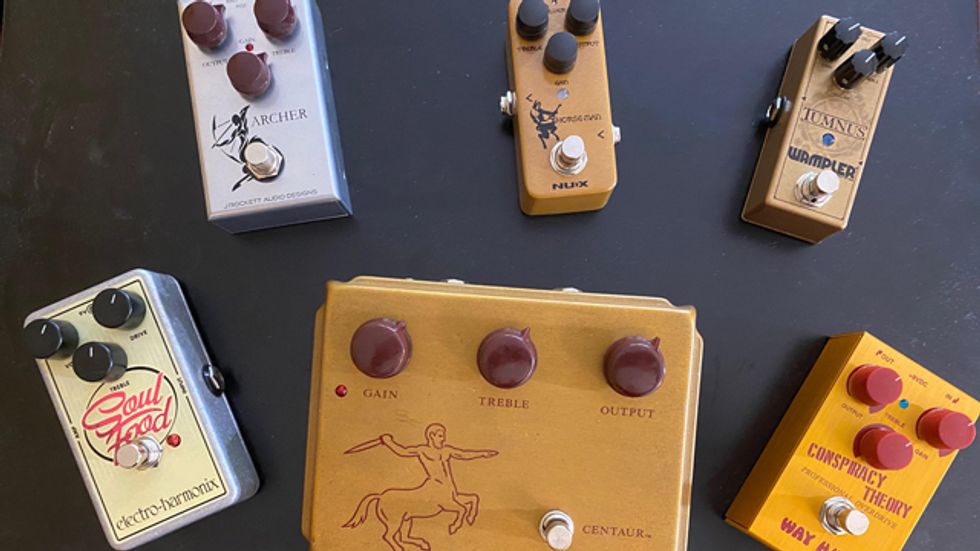
The Verdict
All five of these effects get very close to the sound of a first-generation Klon Centaur. In other words, they sound terrific! Reviewing them taught me a lot about the original—most notably the fact that its character has little to do with specific clipping diodes, despite countless claims to the contrary. The J. Rockett Archer uses old-school germanium diodes, and it's nearly indistinguishable from the Klon. But then so is the Wampler Tumnus, which substitutes silicon surface mount diodes. As far as I'm concerned, the germanium clipping diode is a big, fat red herring.
The Electro-Harmonix Soul Food gets close to Klon despite using silicon clipping diodes. At $86, it's a steal. At high-gain settings it's ever so slightlybrighter than the original, but that's not necessarily a bad thing. It even comes with an adapter.
J. Rockett's Archer, with its germanium clipping diodes, is the Klon's sonic twin. It's easily the most rugged of the klones, with a reassuring heft that evokes the original. But quality isn't cheap—at $199, the Archer is the most expensive option. If cost is no object, it's my No. 1 pick.
Nux Effects' Horseman sells for a remarkably low $69. Of the five pedals, it's the easiest to distinguish from the original Klon, but that's not saying much. It still gets quite close, and some players may even prefer its slightly rougher sound. Its AA-sized enclosure is a panacea for overpopulated pedalboards. This is the no-brainer bargain pick.
Wampler's $149 Tumnus is pretty and petite in its tiny AA enclosure. It rivals the Archer for most authentic Klon sound, even though it employs silicon diodes. The construction is lovely. We also took a quick peek at the $199 Tumnus Deluxe, which adds a high-gain mode and 3-band tone stack that yield many variations on the famous formula.
Way Huge's Conspiracy Theory also gets extremely close to the Klon sound. It sometimes sounds a wee bit warmer/darker, but some players may prefer this profile, assuming they ever notice it. It's the least expensive option to include germanium diodes.
Admittedly, it sounds terminally wimpy to conclude with, “Gosh, they all sound great." But it just happens to be true. (Well, they are clones!) I'd use any of these onstage or in the studio without hesitation. Your choice may be more about price and pedal size than any minor tonal discrepancies.
Oh, one last fun detail: After recording all the re-amped examples into a single Logic Pro session, I thought it might be fun to hear the Klon and the five klones simultaneously. That's the last item in the Extra playlist (All at Once!.mp3). I panned the six tracks in stereo, but there's no additional processing. I expected a bloody mess. But it sounds pretty much like a Klon—just like everything else here.
Other Affordable Klone Options
Chellee Ponyboy, $119 street, chellee.comJoyo Tauren, $54, joyo.com
Keeley Oxblood, $199 street, robertkeeley.com
MXR Sugar Drive, $120 street, jimdunlop.com
[Updated 9/10/21]



